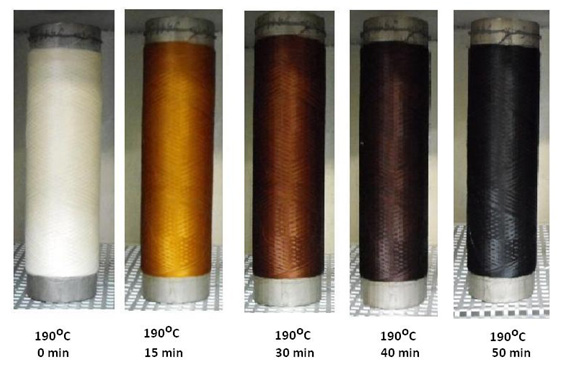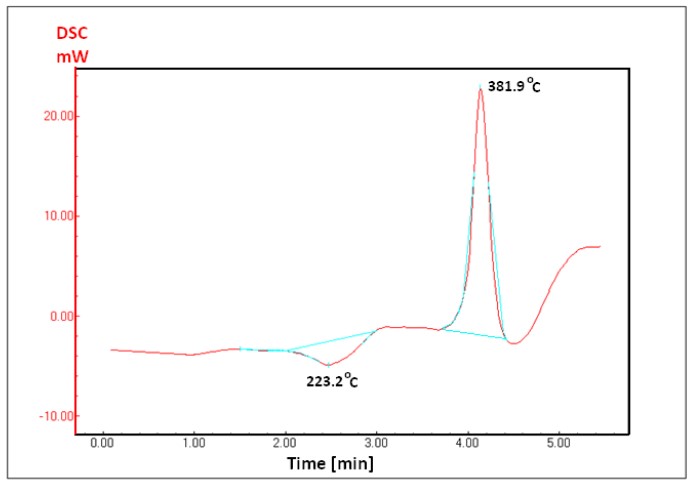THERMPAN AND ITS PROPERTIES
Home > THERMPAN and its properties
The physical and mechanical properties of THERMPAN may vary due to the type of copolymer
used in the preparation of the resin and its molecular weight. For this reason, different types
of THERMPAN resins can be produced according to a specific need.
THEMPAN fibers
For a PAN copolymer with 6% of polyvinyl acetate with Mw of 120,000 Daltons, the following
values are found:
Without stretching
Composition |
PAN- co-polyvinyl acetate 6% |
Molecular Weight (Mw) |
120.000 |
Extrusion temperature |
220°C |
Tenacity (MPa) |
45 |
Module (GPa) |
2,9 |
Specific deformation (%) |
5,0 |
With 14X stretching
Composition |
PAN- co- Acetato de Polivinila 6% |
Molecular Weight (Mw) |
120.000 |
Extrusion temperature |
220°C |
Drawing temperature |
180ºC |
Tenacity (MPa) |
625 |
Module (GPa) |
10,1 |
Specific deformation (%) |
5 a 8 |
For 25 dtex multifilament fibers produced with the same polymer and stretching rate of 8X,
the tenacity is 23 cN/tex and the elongation is 11%.
Surface Energy
The surface energy of THERMPAN resin films evaluated in terms of its contact angle (θ) is
approximately 65º, reaching 28º with treatment of its surface with nitrogen plasma, which
means that it presents better adhesion than PP (90°), PET (92°) and PVC (86 °), for example, to
cement or common adhesives on the market.
Thermal Stabilization
THERMPAN fibers can be easily de-plasticized by washing with hot water and, after this
process, they have the same thermal stabilization characteristics as the PAN fibers obtained by
wet spinning.
 Thermal stabilization of Thermpan fibers at 190ºC
Thermal stabilization of Thermpan fibers at 190ºC
Thermal analysis
Thermal analysis (DSC) shows the melting peak of THERMPAN, approximately 150ºC below the
exothermic cyclization peak of PAN present in the resin.
 Typical DSC analysis of a THERMPAN resin
Typical DSC analysis of a THERMPAN resin
Peaks: 223.2ºC Melting; 381.9ºC Cyclization
Rheological Analysis
The rheological analysis shows that the lower the working temperature of the THERMPAN resin in the extruder, the longer the residence time within the viscosity range that allows its flow and desired conformation is. With a THERMPAN resin that shows good fluidity at 180ºC, its residence time before the viscosity increases due to cyclization and cross-linking is 25 minutes. For temperatures around 240ºC, this time is reduced to approximately 3 minutes.

 Typical DSC analysis of a THERMPAN resin
Typical DSC analysis of a THERMPAN resin